Surprise, AZ Pollen and Allergy Report for Summer 2023
Pollen Allergy Trends in Surprise, AZ
When is pollen lowest in Surprise, AZ?

February
Lowest month total PPM
Avg. PPM
When is pollen highest in Surprise, AZ?

March
Highest month total PPM
Avg. PPM
How does pollen in Surprise, AZ compare to Arizona?
Surprise has a lower average PPM than the state of Arizona.
Surprise yearly avg PPM:
Arizona yearly avg PPM:
How does pollen in Surprise, AZ compare to the USA?
Surprise has a lower average PPM than the USA.
Surprise yearly avg PPM:
USA yearly avg PPM:
Is pollen worse this year in Surprise, AZ?
Spring 2023 was better than spring 2022.
Spring 2023 PPM:
Spring 2022 PPM:
Average PPM in Surprise, AZ
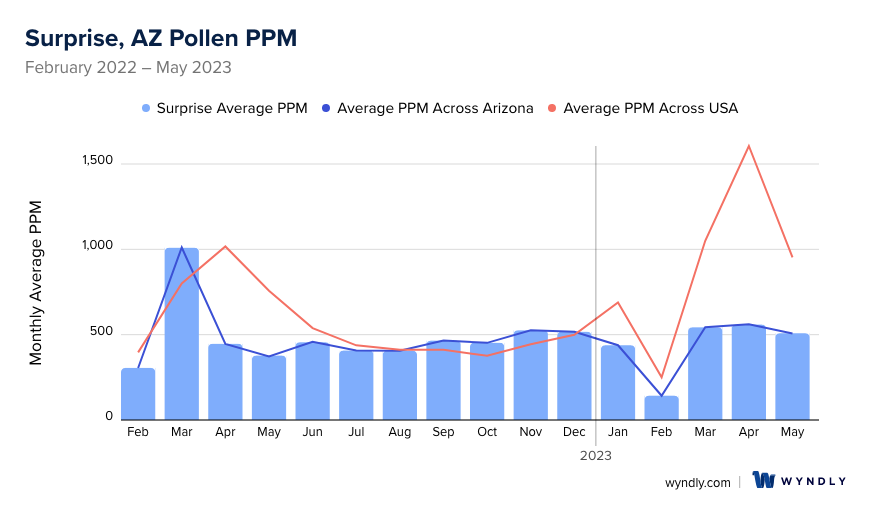
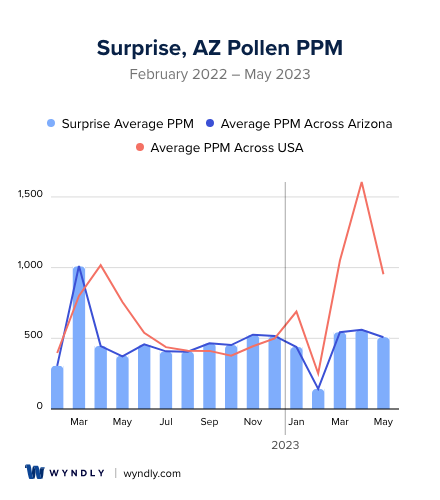
Surprise, AZ Pollen and Allergy Breakdown by Month
Grass
When is grass pollen highest in Surprise, AZ?
May has the highest grass pollen in Surprise, AZ with an average PPM of
When is grass pollen lowest in Surprise, AZ?
December has the lowest grass pollen in Surprise, AZ with an average PPM of
Tree
When is tree pollen highest in Surprise, AZ?
March has the highest tree pollen in Surprise, AZ with an average PPM of
When is tree pollen lowest in Surprise, AZ?
July has the lowest tree pollen in Surprise, AZ with an average PPM of
Weed
When is weed pollen highest in Surprise, AZ?
December has the highest weed pollen in Surprise, AZ with an average PPM of
When is weed pollen lowest in Surprise, AZ?
February has the lowest weed pollen in Surprise, AZ with an average PPM of
Surprise, AZ Pollen Monthly Breakdown by Pollen Type
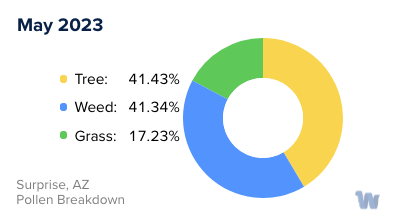
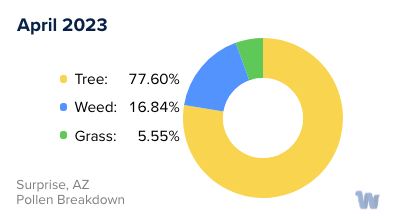
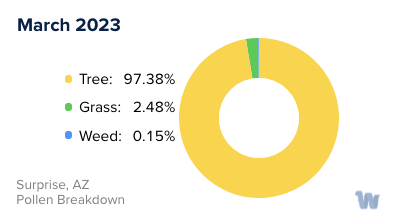
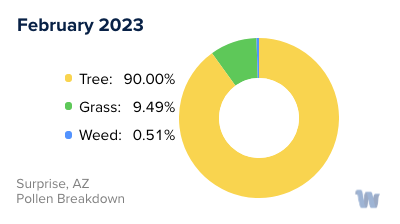
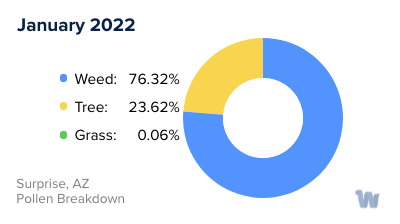
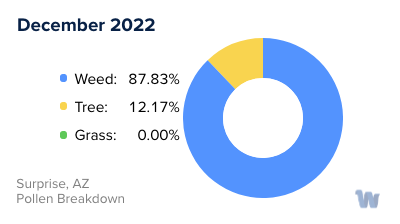
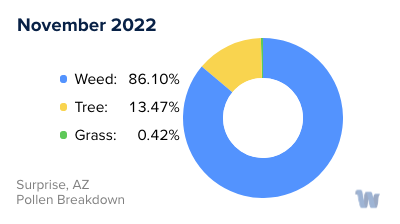
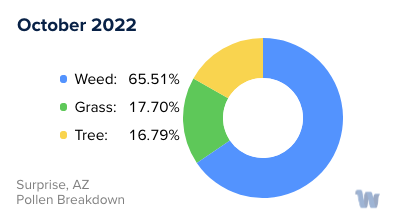
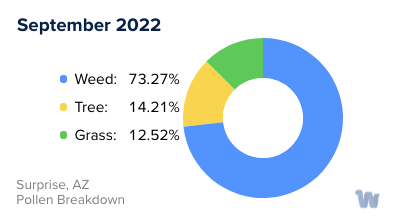
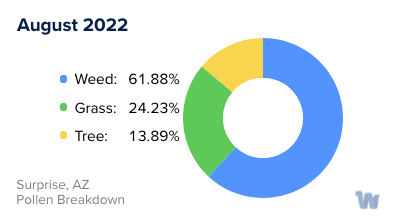
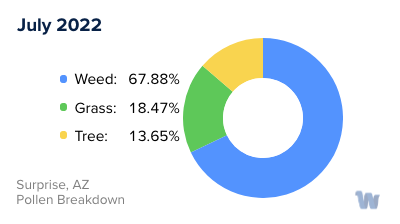
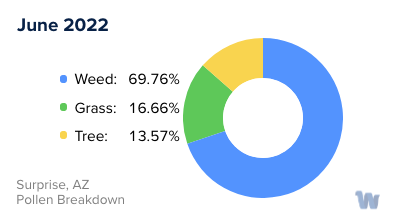
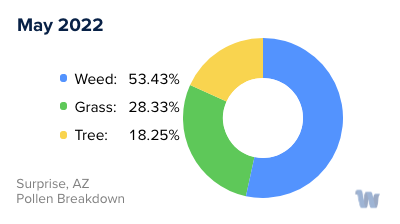
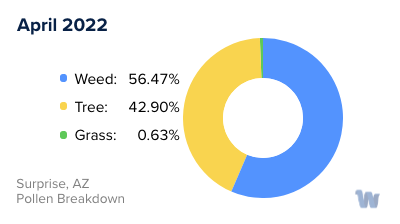
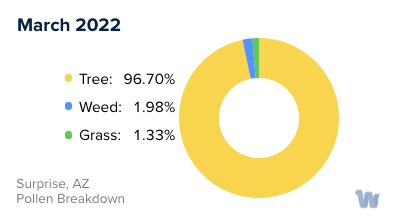
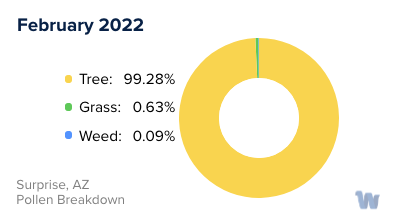
Pollen and Hay Fever in Surprise, AZ
In the vibrant city of Surprise, Arizona, many residents eagerly await the arrival of spring and the accompanying explosion of colors as plants come to life. However, for some, this season also heralds the onset of pollen allergies, commonly known as hay fever.
Pollen is a fine powder produced by plants for fertilization. In Surprise, the primary culprits behind pollen allergies are trees, grasses, and weeds. Tree pollen is most prevalent in the spring. Mesquite, Palo Verde, and Olive trees are particularly notorious for releasing copious amounts of pollen into the air. Grass pollen follows, peaking in late spring and early summer. Bermuda grass, a common choice for lawns in Surprise, is a significant source of grass pollen.
Weeds, on the other hand, usually release pollen in late summer and fall. In Surprise, Ragweed is the main offender, although other weeds such as Russian Thistle and Sagebrush also contribute.
Pollen counts, which measure how much pollen is in the air, tend to be higher on warm, windy days and lower on cool, rainy days. In Surprise, where the climate is typically arid, pollen counts can remain elevated for extended periods during the blooming seasons.
Hay fever symptoms include sneezing, a runny or stuffy nose, and itchy or watery eyes. These symptoms are the body's reaction to pollen, as it mistakenly identifies these tiny particles as harmful invaders.
Understanding the types of pollen and their respective seasons in Surprise, Arizona, is essential for those with pollen allergies. Being aware of the local pollen forecast can also help individuals better anticipate and manage their symptoms during high pollen seasons.


